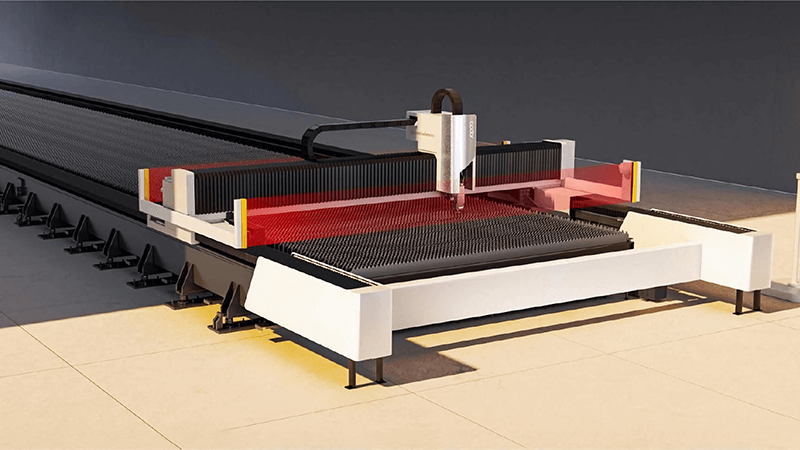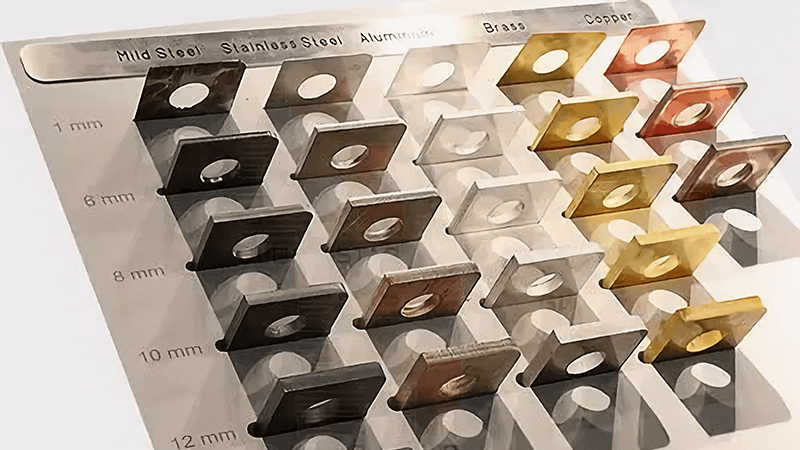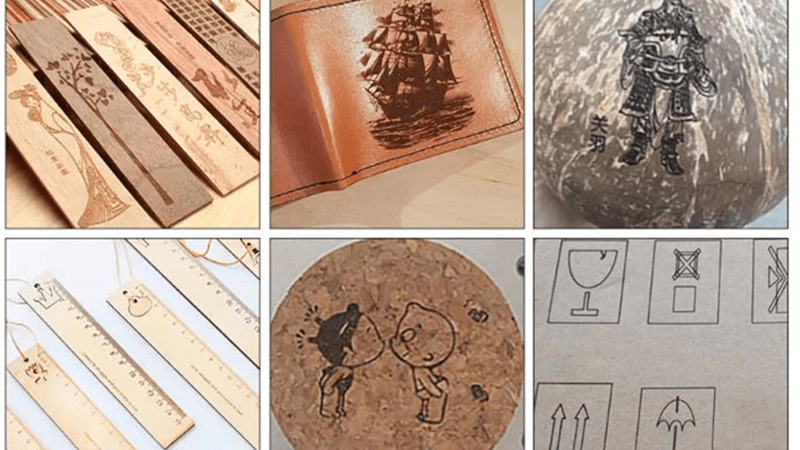When I first started working with laser machines, I noticed one thing: many managers pick the wrong tool and lose both time and money. Choosing between fiber and CO₂ is not just technical—it is about business survival.
Fiber lasers are faster and more efficient for metals, while CO₂ lasers excel at non-metals like wood or acrylic. The better choice depends on the material and production goals.
Both technologies have value. The real question is: which one matches your needs? Let me share how I explain this choice from Kirin Laser’s point of view.

What is the difference between a fiber laser cutter and a CO2 laser engraver?
When I meet procurement managers, they often confuse cutting and engraving. They also struggle to see why fiber and CO₂ behave so differently. This confusion leads to poor investments.
A fiber laser cutter uses a solid-state laser with fiber optics, ideal for metals. A CO₂ laser engraver uses gas discharge, great for wood, plastics, and organics. The difference lies in wavelength, efficiency, and application.
Breaking Down the Core Differences
The gap between these two technologies is not small. Fiber lasers work at around 1064nm wavelength. That wavelength interacts strongly with metals, so fiber cuts thin stainless steel, aluminum, or copper much faster. On the other side, CO₂ lasers work at 10.6µm. This longer wavelength is absorbed by organics like wood, leather, or acrylic, making them perfect for signage, furniture, or crafts.
I have seen fiber lasers slice through thin metals in seconds while saving energy and maintenance hassles. CO₂ still shines on thicker jobs or on non-metal materials, where the cut edge is smoother. That is why we design and OEM both solutions at Kirin Laser. Each machine has its space.
Structured Comparison
| Feature | Fiber Laser Cutter1 | CO₂ Laser Engraver2 |
|---|---|---|
| Wavelength | ~1064 nm | ~10.6 µm |
| Best for | Metals | Wood, acrylic, plastics |
| Speed on thin metals | Very fast | Slow |
| Edge quality on non-metals | Poor | Excellent |
| Maintenance | Low | Higher |
| Energy efficiency | High | Moderate |
The first thing I always tell managers: don’t compare them as direct rivals. Compare them based on what your market actually needs.

What materials should you never use in a CO2 laser cutter?
Some new users think a CO₂ cutter can handle anything. That mistake often ends in toxic fumes, damaged optics, or even machine fires. I have seen buyers ruin machines in less than a week.
You should never use PVC, polycarbonate, or certain metals in a CO₂ laser cutter. These materials release harmful fumes, damage optics, or reflect the beam dangerously.
Why Some Materials Are Dangerous
One client came to me frustrated. He tried cutting PVC3 with a CO₂ machine. Within minutes, chlorine fumes corroded his optics. His factory smelled toxic, and the repair cost more than half the machine’s value. We helped him replace it with a fiber laser4 for metals and guided him toward safer acrylics and woods for the CO₂.
At Kirin Laser, we always educate buyers. Not because we fear damage claims, but because safety matters. Our machines are tools, not toys. Misuse turns investment into disaster.
Safe vs. Unsafe Materials
| Category | Safe for CO₂ | Never Use in CO₂ |
|---|---|---|
| Plastics | Acrylic, Delrin | PVC, Polycarbonate |
| Metals | None (except anodized marking) | Aluminum, Stainless, Copper |
| Organics | Wood, Leather, Paper | Teflon-coated materials |
| Fabrics | Cotton, Felt | Fiberglass, Carbon fiber |
So my advice is simple: use CO₂ where it shines—organics and safe plastics. Never gamble with toxic or reflective materials.

Which is better fiber laser or CO2 laser?
This is the question that managers love to ask me at trade shows. They hope for a single-word answer. But the truth is: “better” depends on what you cut and how you run your business.
Fiber lasers are better for metals, high speed, and low maintenance. CO₂ lasers are better for non-metals, smooth edges, and detailed engraving. The better choice depends on your materials and production goals.
Real Stories From My Clients
One client was stuck with a CO₂ machine. It worked great on acrylic, but it was painfully slow on thin stainless. After switching to a fiber laser5, he cut parts four times faster and saved on maintenance. His team finally hit delivery deadlines without overtime.
On the other hand, a furniture maker told me his fiber laser sat idle because his jobs were all wood-based. He needed the CO₂’s edge finish. That is why I say: there is no universal “better.” There is only “better for you.”
Head-to-Head Overview
| Criteria | Fiber Laser | CO₂ Laser |
|---|---|---|
| Metals | Excellent | Poor |
| Non-metals | Poor | Excellent |
| Speed | Very High | Moderate |
| Cost | Higher upfront | Lower upfront |
| Maintenance | Low | Higher |
| Energy Use | Efficient | Less efficient |
The secret is not to ask which is better in general. The secret is to ask which is better for your specific market. That is where Kirin Laser6 helps you decide.

What are fiber lasers good for?
Fiber lasers are often seen as premium machines. Some managers hesitate at the cost. But when they look deeper, they realize fiber lasers save money in the long run.
Fiber lasers are good for cutting metals like stainless steel, brass, and aluminum at high speed with low maintenance. They are also excellent for precision marking and engraving.
Why Fiber Lasers Shine in Industry
Fiber lasers are versatile. They do more than just cut. They mark serial numbers, engrave logos, and even weld thin parts. That is why OEM clients from automotive to electronics7 keep asking us for fiber machines. They want one platform that does many jobs.
I once worked with a manufacturer in the electronics sector. He needed to mark thousands of small components daily. His old CO₂ system overheated and slowed down. After moving to fiber, his team tripled output and reduced downtime. The savings paid for the machine in less than a year.
Key Fiber Laser Applications
| Application | Why Fiber Fits | Example Use |
|---|---|---|
| Metal Cutting | Fast, precise, low-cost | Stainless parts |
| Marking | High contrast on metals | Serial numbers |
| Engraving | Permanent and fine | Tool branding |
| Welding | Clean and strong | Thin steel joints |
| Industrial Production | Scalable | Automotive, electronics |
From my perspective, fiber lasers8 are not just machines. They are strategic investments. When you need speed, precision, and long-term reliability, fiber is the right answer.

Conclusion
From Kirin Laser’s point of view, the right laser depends on your material and market. Fiber lasers dominate in metals, efficiency, and industrial growth. CO₂ lasers stay unbeatable in non-metals, smooth edges, and creative industries. Both have a role, but the wrong choice costs money and reputation. My advice: match the machine to your business, not the other way around.
Contact us9 to get all your needs for your business.
-
Explore this link to understand the benefits and applications of Fiber Laser Cutters in various industries. ↩
-
Discover how CO₂ Laser Engravers excel in cutting and engraving different materials, enhancing your project capabilities. ↩
-
Understanding the dangers of cutting PVC can help prevent costly damage and ensure safety in your workspace. ↩
-
Exploring fiber laser technology can enhance your cutting efficiency and safety, making it a valuable investment. ↩
-
Explore this link to understand how fiber lasers can enhance cutting efficiency and quality for various materials. ↩
-
Discover how Kirin Laser can guide you in selecting the perfect laser cutter tailored to your specific industry needs and improve your production efficiency. ↩
-
Discover how fiber lasers enhance efficiency and versatility for OEMs in automotive and electronics, offering a strategic edge in production processes. ↩
-
Explore the benefits of fiber lasers to understand their impact on efficiency and productivity in various industries. ↩
-
Find the best laser cutting machine and laser cutting solutions from Kirin Laser, clicking this link to get all your needs for your business. ↩





